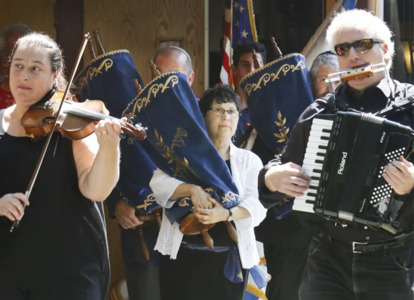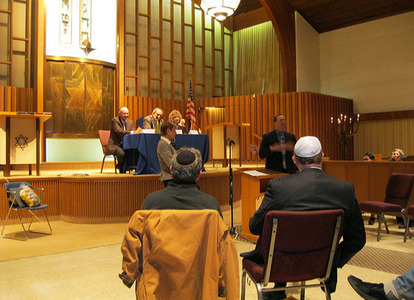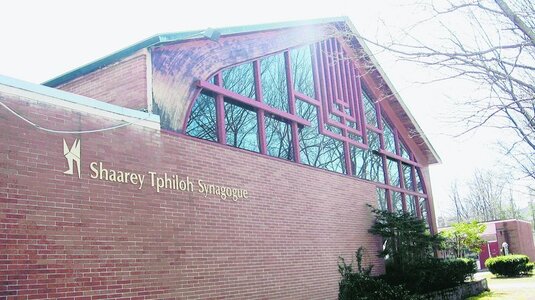Congregation Shaarey Tphiloh - Noyes Street
BackCongregation Shaarey Tphiloh - Noyes Street
66 Noyes Street
From TBE on Deering Ave., turn onto Noyes St. A short way down is the site of the second Shaarey Tphiloh synagogue, now Portland Community Squash. This building was the second home of Shaarey Tphiloh—the oldest continuously active congregation, and the primary (and largest) congregation in Portland for many years. The Orthodox synagogue was active in this Noyes Street location for 60 years, from 1956 to 2016.
Initially formed in 1900, Shaarey Tphiloh’s first home was the building on Newbury Street on Munjoy Hill, which opened in 1904 (Stop E04). This modern new synagogue was built here in 1956 to meet the needs of the congregation as its members migrated to the Woodfords Corner area. From the 1950s into the 1970s, Shaarey Tphiloh thrived at Noyes Street. In those years, it was one of the largest Modern Orthodox communities in the Northeast; membership grew to around 400 families, and the congregation ran an active Hebrew school under Rabbi Moshe Bekritsky, who served from 1948 to 1974.
But in subsequent years, membership dwindled. In 2016, Shaarey Tphiloh sold its building on Noyes Street to Portland Community Squash and moved to leased space on the campus of nearby Temple Beth El, (Stop W02). Shaarey Tphiloh congregants now meet there on High Holidays and special Shabbatot and join with Congregation Beth El for social and community events.
Portland Community Squash (PCS), the new owner of this Noyes Street building, is a vibrant community organization that uses the sport of squash to create multicultural and multigenerational communities. When the synagogue leadership was selling the building, they were able to match funds with PCS to help support the new community organization, and to preserve the original building, along with its iconic menorah facing the street. To honor the links between the past and the present, PCS has two brass plaques featuring interviews with Gerald Cope, a longstanding member of Shaarey Tphiloh, and the current rabbi, Akiva Herzfeld.
PCS turned the former main sanctuary into squash courts and the former Hebrew school into a community after-school center. The repurposed facility opened in 2017, and by 2024, PCS had almost 350 memberships, was working with multiple community organizations, and serving more than 170 students (many of them multilingual, low-income, and first generation degree-seeking youth). The organization’s theory of change is to “build vibrant hubs of activity, where neighbors develop enough human and social capital to overcome ever-changing societal challenges and prosper. Together.”


